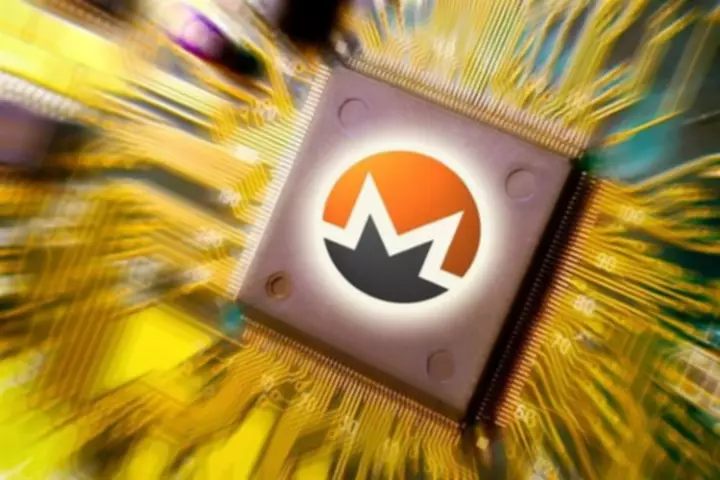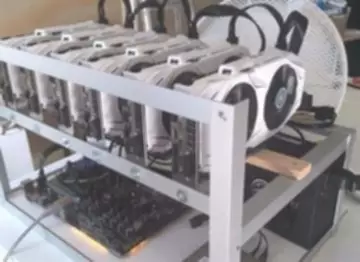First Thing’s First: What is Cryptocurrency Mining?

Cryptocurrency Mining, or simply Cryptomining, refers to the process of verification and addition of a variety of digital currency transactions to a blockchain. This process also goes by various names such as altcoin mining, Bitcoin mining, (when referring to the mining of the first and most popular Cryptocurrency), or Cryptocoin mining.
This venture had gathered quite a following not only as a topic but as an economic exercise as well. As this is the case, the demand for Cryptomining had increased considerably within the years.
When a Cryptocurrency transaction is done, the Cryptocurrency miner should be able to ensure that the information is authentic and that the blockchain is updated to a tee.
Cryptomining is ALWAYS a Competition
It must be noted that mining for digital currencies is actually a competition between miners. This competition entails the solving of complex mathematical problems that contain cryptographic hash functions connected with a block that has the data of the transaction
The miner who is able to crack the code first is given a reward through the ability to authorize the transaction. In addition, the miners are given a chance to earn small amounts of digital currencies for the service that they had provided.
What an Interested Cryptomining Should Know
It is a widely-accepted fact that Cryptomining generates little returns for the miner. There are instances wherein the user only gets a measly $1.00 or $2.00 through their own hardware.
And of course, the miner’s expenditures also factor in when considering their earnings. The miner has to take into account the electricity, the hardware for computing, and of course, the internet connection.
What Cryptomining Requires
A dedicated computer takes precedence in starting one’s own mining endeavor. What this means is that an interested party should acquire, either by purchase or by build, computer hardware that would be used specifically for mining.
This hardware should have a graphical processing unit (GPU) chip or an application-specific integrated circuit (ASIC).
On top of that, it is expected to have a powerful cooling capacity, a strong internet connection, and a Cryptocurrency mining software package that is not only effective but altogether legitimate.
With consideration of legitimacy to ownership, the miner should be a member of both an online Cryptocurrency exchange and an online mining pool.
How to Mine for Monero Coins

Now that the pertinent details regarding Cryptomining have been laid out, it is now time to look into the specific Cryptocurrency for mining, the subject of this page, Monero.
As already discussed, Monero is a viable digital asset in that it is high on privacy capabilities. As this is the case, this altcoin had become quite an industry favorite, especially amongst the ranks of those delving into transactions within the black market. The altcoin’s popularity had furthered when the Monero system had adapted Gregory Maxwell’s Confidential Transactions algorithm.
Despite the seeming complexity of the altcoin, Monero can easily be mined provided that the miner accumulates the necessary resources, as already discussed above. Once all these are secured, the miner can proceed into looking at the various options in mining Monero that one can take.
Bulleted below are the ways by which one can mine for Monero coins:
- AMD Cards
XMR Stak (has a 2% Dev fee except if one is to compile it personally)
Wolf’s Miner (free of charge; however it would not be as optimized) - CPU’s (Intel/AMD)
Monero Spelunker
XMR Stak
Wolfs Miner - nVidia Cards
XMR Stak (has a 2% Dev fee except if one is to compile it personally)
CC Miner
But before one can start mining for Monero, the miner should install the mining software first.
For instance, if one is to choose XMR Stak, setting it up would prove simple. However, using Windows would be recommendable for the ease of installation. Nevertheless, the application had also been made compatible with Linux and macOS; one can download it from an online source.
Joining a Monero Mining Pool
Much like Bitcoin mining, a Monero miner may also choose to join a mining pool. This is recommended given that solo mining may only turn out little and even 0 rewards. One is only charged with small fees to join a pool.
Here are some of the mining pools that one can join:
- Dwarfpool
Server Locations: Europe and the U.S.A.
1.5% Pool Fee
Payout Commission:
0.014XMR for exchange wallets
0.008XMR for normal wallets - MineXMR
Server Locations: France, Germany, and Canada
1% Pool Fee
~25,000 Connected Users
0.5XMR Minimum Payout - Moneropool
0.5XMR Minimum Payout - Nanopool
Server Locations: Europe (2), U.S. (East and West) and, Asia
1% Pool Fee, and Payout Commission of 0.015XMR
~5000 Connected Users
1XMR Minimum Payout
Time to Get Started
While it is already known that while Cryptomining, altcoin mining, Bitcoin mining, or Cryptocoin mining–whatever you choose to call it–may prove to give you little returns, that doesn’t change the fact, there is a thrill of the chase among miners.
If we are to look at it from a detached perception, the returns could be so much more provided a miner is willing to risk much. Put, apart from the ropes that one has to learn, patience, and the willingness to spend are qualities that the interested miner should possess.
The miner is also given various options in methods and platforms for mining Monero. On top of that, the miner is also provided with the option of joining a Mining Pool to increase the chances of greater profitability in the buying and selling of Monero coins.
With all these laid ouds, only one thing is left for the Monero trader to decide on: if he or she would get started with Monero Mining.